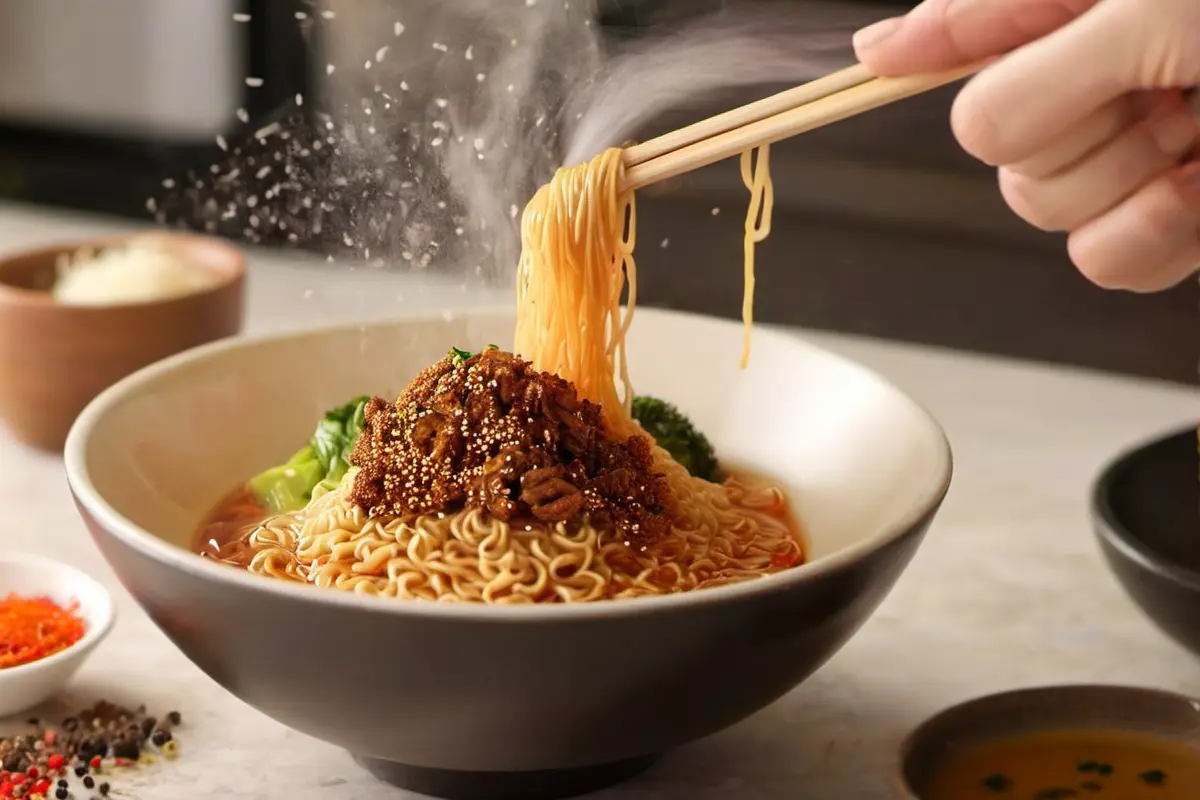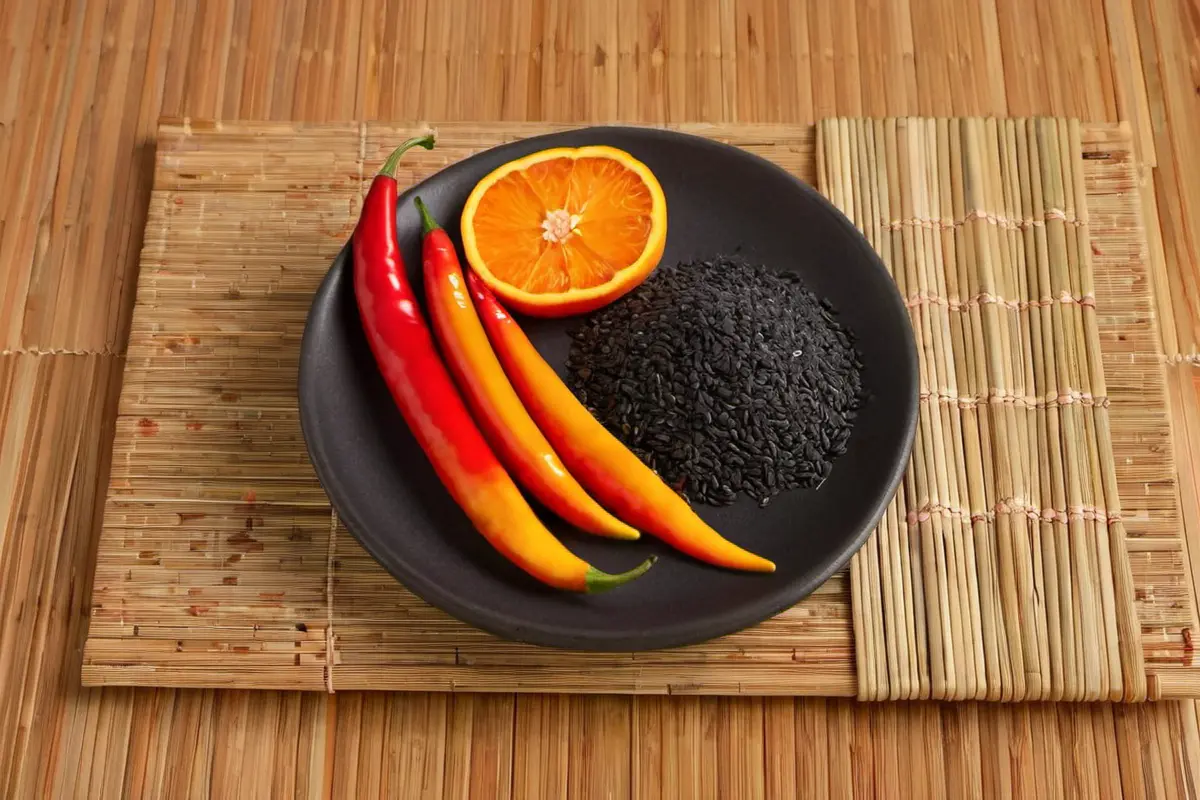What is Togarashi seasoning made of, and why is it so integral to Japanese cuisine? This article dives deep into the vibrant world of Togarashi, a beloved Japanese spice mix that brings a burst of flavor and a touch of tradition to every dish it graces. From its rich history to the varied ingredients that make up its unique blend, we will explore how Togarashi can transform cooking and delight taste buds. Whether you’re a seasoned chef or a curious foodie, this journey through the flavors of Japan promises to spice up your culinary repertoire!
Introduction to Togarashi
What is Togarashi?
As cooks, we often seek that perfect blend of flavors to elevate our dishes. Enter Togarashi, the Japanese spice mix that’s a staple in many kitchens across Japan and increasingly around the world. But what is Togarashi seasoning made of, exactly? Essentially, it’s a combination of seven distinct ingredients, each adding its own layer of complexity and taste to the blend.
Togarashi isn’t just a seasoning; it’s a cultural icon, deeply embedded as a key ingredient in Japanese cooking, a fact detailed further in this insightful Bokksu article. This spice mix, also known as Shichimi Togarashi, which translates to “seven flavor chili pepper,” has been enhancing Japanese food for centuries with its vibrant, spicy kick.
Common Uses in Cooking
Moreover, what makes Togarashi truly special is its versatility. Whether it’s sprinkled over piping hot noodles, used to season hearty soups, or added to marinades, Togarashi brings a touch of zest and a hint of spice that complements a wide array of dishes. Its ability to meld spicy, citrusy, and umami flavors makes it a favorite among chefs and home cooks alike.
So, next time you reach for your spice rack, consider adding a dash of Togarashi. It’s guaranteed to add not just flavor but a story of Japanese culinary tradition to your meals. Now, let’s delve deeper into the ingredients that make Togarashi an indispensable kitchen staple. Stay tuned as we explore the colorful components that make up this exquisite Japanese seasoning in the next section of our article.
What is Togarashi?
Components of Togarashi Seasoning
Each ingredient in Togarashi is chosen for its ability to contribute depth and intrigue to the blend. The heart of Togarashi ingredients includes red chili peppers, which provide the heat; Sichuan peppercorns, offering a unique tingling sensation; dried orange peel for a touch of citrus; and black and white sesame seeds, which add a nutty crunch. Other key components are ground ginger, for a warming spice, and nori seaweed, which introduces a savory umami flavor.
Red Chili Peppers:
The backbone of Togarashi’s heat, these peppers vary in spiciness but always contribute a robust flavor.
Sichuan Peppercorns:
Not your typical pepper, these offer a slight numbing effect that enhances the spice experience.
Dried Orange Peel:
This ingredient cuts through the heat with its bright, refreshing citrus notes.
Sesame Seeds:
Both black and white varieties are used, providing a subtle texture and rich flavor.
Ground Ginger:
Adds a sharp, pungent kick that rounds out the spice profile.
Nori Seaweed:
Brings a deep, oceanic taste that balances the overall spiciness of the blend.
Understanding these ingredients is key to appreciating the complexity and balance of Togarashi. Each component is essential, working in harmony to produce a seasoning that is much more than the sum of its parts. Below is a table that outlines the main ingredients, their specific roles in the flavor profile, and their health benefits:
| Ingredient | Role in Togarashi | Culinary Benefits | Health Benefits |
|---|---|---|---|
| Red Chili Peppers | Provide heat | Adds spiciness to dishes | Boosts metabolism, aids in fat loss |
| Sichuan Peppercorns | Adds a unique tingling sensation | Enhances flavor complexity | Improves digestion, reduces pain |
| Dried Orange Peel | Adds citrus notes | Balances spiciness with freshness | High in antioxidants, boosts immunity |
| Sesame Seeds | Adds texture and nuttiness | Gives crunch and depth to dishes | Rich in minerals, supports bone health |
| Ground Ginger | Adds sharpness and warmth | Complements other spices, adds depth | Anti-inflammatory, aids digestion |
| Nori Seaweed | Provides umami flavor | Deepens overall flavor profile | Supports thyroid function, high in iodine |
In our next segment, we’ll explore the many ways Togarashi can be used in the kitchen to enhance various dishes, from traditional Japanese meals to innovative, modern recipes. So, if you’re looking to broaden your culinary horizons, stick around as we delve into the culinary uses of this dynamic spice mix.
Culinary Uses
Utilizing Togarashi in Cooking
Togarashi seasoning doesn’t just enhance flavors—it transforms dishes with its rich, layered complexity. Let’s explore some of the most popular ways to incorporate this Japanese spice mix into various culinary creations.
- Traditional Japanese Dishes: Togarashi is a staple in many Japanese recipes. It’s commonly sprinkled over udon noodles, adding a spicy kick to the mild broth. It also elevates simple rice dishes, providing a burst of flavor with every bite.
- Modern Cuisine Applications: Chefs around the world use Togarashi to add a unique twist to non-Japanese dishes. For instance, it can be a bold topping on avocado toast or a spicy rub for grilled meats.
- Snack Enhancements: Believe it or not, Togarashi goes great with popcorn. Just a sprinkle can turn an ordinary snack into a gourmet treat.
Moreover, Togarashi’s adaptability doesn’t end with meals; it can also be added to sauces and dips to bring a touch of heat and umami. Its unique blend of spices makes it perfect for experimenting in the kitchen. Whether you’re dressing up a plate of nachos or spicing up a salad dressing, Togarashi adds a memorable flavor that guests and family members will love.

In the next section, we’ll look at the potential health benefits of incorporating Togarashi into your diet. From its metabolism-boosting properties to its rich antioxidant makeup, there’s more to Togarashi than meets the eye. Stay tuned as we delve into how this powerful seasoning can contribute not only to your meals but also to your health.
Health Benefits
Health Benefits of Togarashi Ingredients
Togarashi elevates dishes with its bold flavors and packs a punch in terms of health benefits. Each ingredient in this dynamic Japanese seasoning contributes to its overall nutritional profile.
- Red Chili Peppers: Known for their ability to boost metabolism, these peppers are rich in capsaicin, which has been shown to increase metabolic rate and aid in fat burning.
- Sichuan Peppercorns: These unique peppercorns are not only exciting to the palate but also may help improve digestion and reduce pain with their anti-inflammatory properties.
- Dried Orange Peel: High in vitamin C, orange peel supports immune health and can help combat free radicals with its antioxidant capabilities.
- Sesame Seeds: These tiny seeds are powerhouses of nutrients, including calcium, magnesium, and zinc, which are essential for bone health and overall wellness.
- Ground Ginger: Ginger is widely recognized for its anti-nausea properties and its ability to aid digestion. It’s also a powerful anti-inflammatory.
- Nori Seaweed: Rich in iodine and tyrosine, nori supports thyroid function, which regulates metabolism and maintains energy levels.
Incorporating Togarashi into your diet isn’t just a culinary adventure; it’s a step towards a healthier lifestyle. To explore more about the sauce variant of this seasoning, consider reading about Togarashi sauce and how it can be used to enhance your dishes with traditional Japanese flavors.
Next, we’ll explore how Togarashi varies from region to region in Japan, shedding light on the cultural significance and the artisanal variations of this beloved spice mix. Stay tuned to discover how different locales put their unique twist on Togarashi, making each blend a testament to regional flavors and traditions.

Regional Variations
Regional Variations and Custom Blends
The essence of Togarashi captures not only the flavors of Japan but also its regional diversity. Across different parts of Japan, local variations of Togarashi reflect unique culinary traditions and available local ingredients, offering a fascinating glimpse into the country’s regional food culture.
- Kanto Region Togarashi: In the eastern part of Japan, the blend tends to be spicier, with a higher proportion of chili peppers. This version often includes sansho pepper, adding a sharp, tangy zest.
- Kansai Region Togarashi: Moving west, the blend in the Kansai region usually features more seaweed and dried citrus peel, resulting in a milder flavor that emphasizes umami and citrus notes over sheer heat.
- Kyushu Togarashi: In the southern parts of Japan, a sweeter version prevails, often incorporating dried yuzu peel and sometimes even sugar, balancing the spice with sweetness.
Each regional blend of Togarashi tells its own story, adapted over generations to suit local tastes and cuisines. These variations not only highlight the adaptability of Togarashi but also demonstrate how a single spice mix can evolve and integrate into the culinary fabric of an entire nation.
For those keen on crafting their own Togarashi at home, understanding these regional differences can inspire experimentation with local ingredients to create a personalized spice mix that suits specific flavor preferences.
Next, we’ll cover how to select the best Togarashi and the ideal ways to store it to preserve its freshness and potency. Whether you’re buying it from a store or blending it yourself, these tips will ensure you get the most out of this versatile seasoning.

